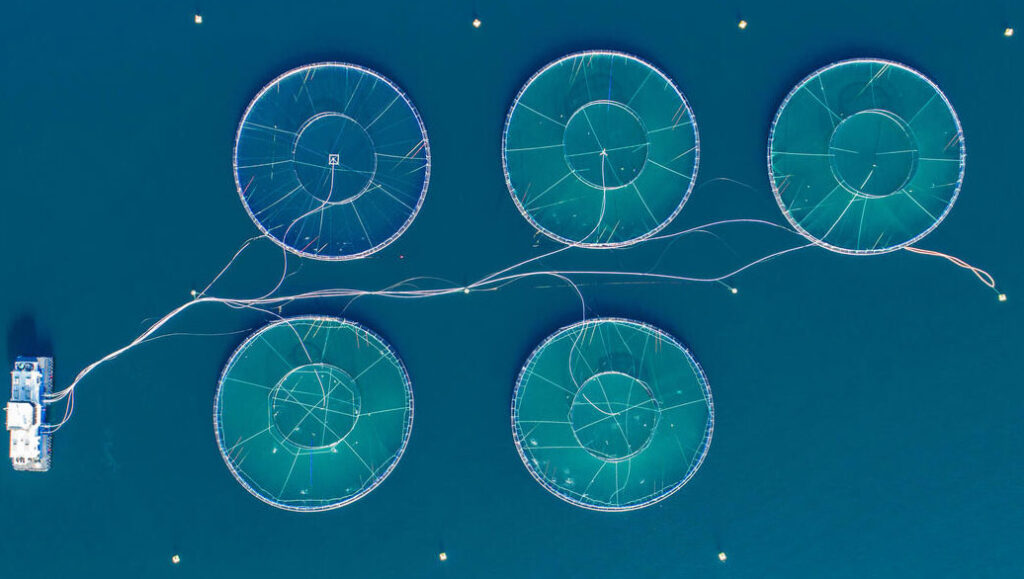TURNKEY MARINAS
We provide comprehensive support for our clients’ marina projects from inception to completion. This includes offering design guidance, handling engineering, overseeing production and installation, performing repair and preventive maintenance, and managing the entire project.
Our Businesses
Recent Posts

Cage nets fish farming, also known as cage aquaculture or open-water aquaculture, is a method of fish farming that involves raising fish in net enclosures or cages suspended in natural bodies of water such as lakes, rivers, or coastal areas. Here are some key points about cage nets fish farming:
1- Net Enclosures:
Fish are raised in large net cagesmade of strong and durable materials such as nylon or polyethylene. These cages are typically submerged in the water, allowing fish to swim and grow within a controlled environment.
2- Water Circulation:
Cage nets are designed to allowwater to flow freely through the netting, providing a constant supply of fresh water and ensuring proper oxygenation for the fish.
3- Fish Species:
Various fish species can befarmed in cage nets, including salmon, trout, tilapia, seabream, and catfish. The choice of species depends on factors such as market demand, local environmental conditions, and regulations.
4- Benefits:
• Fish Species: Various fishspecies can be farmed in cage nets, including salmon, trout, tilapia, seabream, and catfish. The choice of species depends on factors such as market demand, local environmental conditions, and regulations.
• Water Quality Control: Water exchange through the nets helps maintain good water quality and reduce the buildup of waste products.
• Reduced Environmental Impact: Properly managed cage net operations can minimize the risk of pollution and disease transmission to wild fish populations.
• Controlled Feeding: Fish in cage nets can be fed with formulated diets, allowing for precise feeding control and optimizing growth.
• Certified according to NS9415 standards.
5- Challenges:
• Disease and Parasite Management: The close proximity of fish in cage nets can increase the risk of disease outbreaks and parasite infestations, requiring vigilant monitoring and management practices.
• Environmental Impacts: Cage nets must be properly managed to avoid the accumulation of excess feed, waste, and chemicals that can potentially impact water quality and surrounding ecosystems.
• Weather and Natural Disasters: Extreme weather events, such as storms or hurricanes, can pose risks to cage net structures and fish health.
6- Regulations and Sustainability:
Cage nets fish farming is subjectto various regulations and guidelines to ensure sustainable practices, protect wild fish populations, and minimize environmental impacts.
8- Reduced shrinkage:
Through our continuousd evelopment efforts and utilization of cutting-edge, state-of-the-art machinery, we have successfully engineered Dyneema and nylon netting of exceptional quality, characterized by minimal shrinkage. This brings forth the
following advantages:
• Enhanced performance in marine environments.
• Reduced need for repairs.
• Improved durability.
• Optimal fit, facilitating washing operations performed by robots.
9- Types of netting:
We offer a variety type of high quality netting depending on needs and site specifications:
a-Dyneema netting:
Our Dyneema cage nets are renowned for their unmatched quality. Dyneema, being an exceptionally robust material, enables us to use thinner twine compared to other materials. This brings forth a host of advantages:
• Improved water flow within the cage nets, enhancing the welfare of the salmon.
• Reduced occurrence of antifouling and coating requirements.
• Diminished growth, resulting in reduced reliance on robot-assisted washing and subsequently minimizing stress for the fish.
• Maintains its shape with exceptional consistency.
• Superior abrasion resistance in comparison to nylon.
b-Nylon netting:
Nylon netting has long been the preferred choice for cage nets, firmly established as the industry standard:
• Proven track record in the industry.
• Offers cost-effective solutions.
• Facilitates easy repairs.
c-HDPE netting:
The HDPE netting is well suited when net cleaning robots are the most used method for washing the nets:
• Withstands high density of washing.
• Exceptional abrasion properties.
• No need of antifouling.
• Long lifetime and little maintenance.
• Good sink ability.
d-Eurostone predator netting:
Eurostone netting is specifically designed as an anti-predator solution, making it highly recommended for areas where threats from predators, such as seals, are prevalent.
• Effective predator deterrent.
• Exceptional resistance to cuts and damage.
• Maintains its properties in water over time.
• Resistant to oxidation and corrosion.
• Optimal sink ability.
• Environmentally friendly and recyclable.
• Eliminates the need for antifouling treatments.